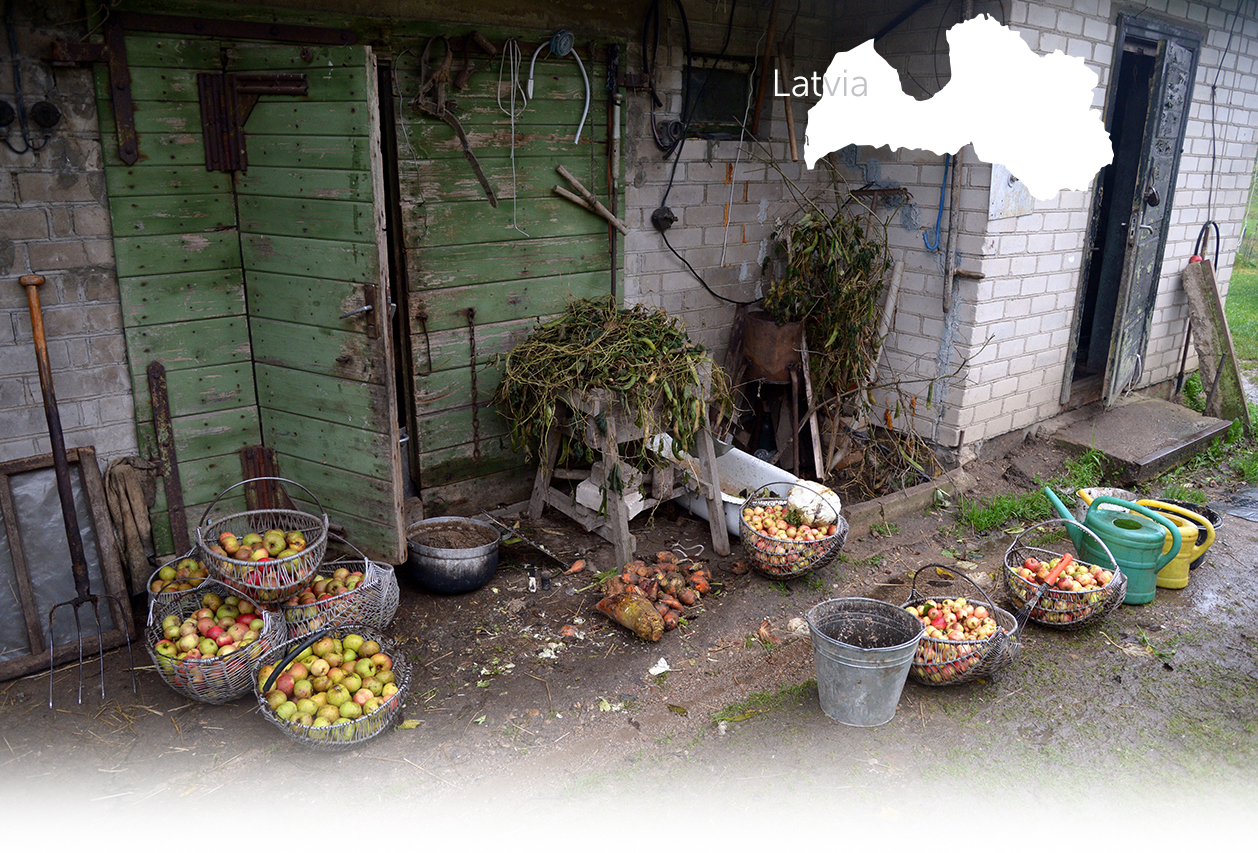

1 Sitio(s) de ejecución
Kārlis K., born in 1934: "As soon as the Germans arrived, they kept saying that the Jews were bad people in the newspapers and on the radio. This propaganda was done in Latvian. The Jews had to wear a yellow circle on their back. I saw them in the streets. At that time, they could still move around freely. Shortly afterwards, the Jews were all gathered at the synagogue. Some of the residents saw the column heading towards the building. I knew that the Jews had been locked up there because everyone around me was talking about it. Once they were rounded up, they were put on trucks and taken to a forest not far from Sabile." (Witness n°70LV, interviewed in Kandava, on September 2, 2021)
Sabile is a town located 93 km (58 miles) west of Riga, in the Kurzeme region of Latvia. The first historical records of Sabile date back to the mid-13th century. In the 17th century, the town became an attractive regional center of crafts and trade. In 1795, the town came under the control of the Russian Empire, and Jews began to settle there for the first time. In 1809, a Jewish cemetery was established in the town. That year, 200 Jews were registered as living in the town. From 1840 to 1864, the town had a formation center for the rabbis of the region. Throughout the 19th century, the development of the local leather industry led to a strong population increase. In 1881, more than 900 out of circa. 1,400 inhabitants were Jewish, about two-thirds of the total population. In 1890, the first synagogue was inaugurated, as well as a prayer house. In 1897, a Yeshiva (a center for Torah studies) began to operate. By 1910, the Jewish community represented about 48% of the population. Young boys studied at the Heder, the Jewish elementary school. The First World War and the various civil wars that marked the period caused a decline in the town’s population. By 1920, there were only 224 Jews left in the town.
The community gradually rebuilt itself with the help of the municipality, which, for example, allowed the Jewish school to continue teaching temporarily on the premises of the Latvian school. In 1922, the Jewish school obtained its own premises. In 1935, 281 Jews lived in Sabile, representing 15.5% of the population. Most of them lived in the town center and worked in trades and crafts, such as grocers, weavers, carpenters, tailors and shoemakers. In addition to Latvians and Jews, there was also a small Roma community. They all lived in the same street and remained isolated from the rest of the inhabitants. In general, relations between Jews and non-Jews were quite good. For example, when Jewish holidays or weddings took place, Latvians were allowed to attend. In the summer of 1940, under the terms of the German-Soviet non-aggression pact, the region was annexed by the USSR. The new Soviet authorities then took a series of measures that gradually brought local Jewish life to a halt. The Jewish elementary school in Sabile was closed and many owners were expropriated from their businesses and stores. In addition, some representatives of the local Jewish intelligentsia were deported to Siberia.
On June 22, 1941, the German armies and their allies began their invasion of the USSR, marking the beginning of Operation Barbarossa. On June 27, the Soviet authorities left Sabile. Some local Jews followed them to flee further east. On July 1, the town was captured by the Germans. During the first days of the occupation, the synagogue was burned down by the Germans and an auxiliary police force composed of locals was created. Anti-Jewish Nazi propaganda was then published in Latvian in newspapers and on the radio. Jews had to wear yellow stars on their clothes at all times, which were stitched onto their backs and torsos. On August 4, 1941, on the orders of the German authorities, all the Jews of Sabile were rounded up, 240 men, women and children. They were all locked up in the synagogue located near the Abava River that runs through the town. The next day, they were taken by truck to a forest located 6 km (3 miles) north of Sabile. There, two large pits were dug. On August 6, the 240 people were shot. A pit was also dug for the execution of the Roma, but the local mayor managed to obtain special permission to cancel this operation. Sabile was liberated by the Red Army in May 1945.
¿Tiene información adicional con respecto a un pueblo que le gustaría compartir con Yahad?
Por favor contáctenos a contact@yahadinunum.org
o llamando a Yahad – In Unum at +33 (0) 1 53 20 13 17